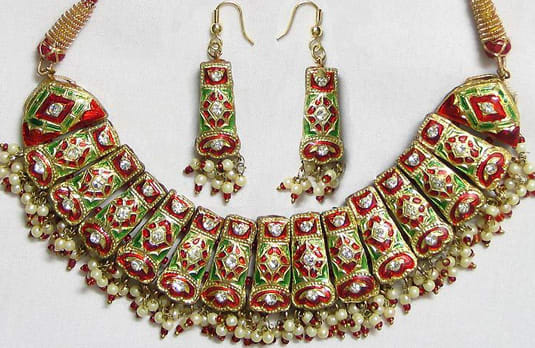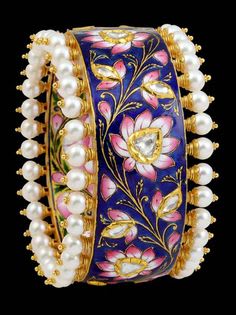India is the paradise for jewellery. With hundreds of cultures, thousands of occasions and numerous reasons to don jewellery, Indian subcontinent works with a variety of jewellery much more than any other country in the world.
India has an astounding variety of jewellery in the traditional category itself. Each of it has deep roots in history, dating back even centuries.
Even the jewellery collections defining new age trends, trained to be crafted in jewellery design institutes, are not complete without fusion jewellery. The fusion jewellery bears a lot of influence from traditional jewellery.
Identifying a vast variety of Indian jewellery comes as a habit to professionals and students of jewellery designing courses in India. Jewellery design education in India bases itself on established jewellery varieties in the country, which makes it easier to transition to new styles that are easily acceptable.
Here is a list of few popular Indian jewellery terminology which is an introduction to the wondrous domain in the context of Indian jewellery designing.
Kundan Jewellery
Kundan is an ancient variety of craftsmanship of India. Kundan jewellery is based on stone art where imitations of glass are used to craft the ornaments. Besides glass, stones like emerald, sapphire and ruby are also used. The craftsmanship of Kundan is rooted in Rajasthan.
Kundan jewellery is made with many layers of varieties of stones weaved into precious metals with an enamelled base. Besides Rajasthan, it’s also famous in Hyderabad. Popular jewellery items crafted are necklaces, heavy earrings and maang tikas.
Meenakari Jewellery
Meenakari suggests the craftsmanship that goes into the peculiar etching and designing of exquisite jewellery. Meenakari art was first used in Mughal architecture, which soon got applied in jewellery. The craftsmen were called meenakar.
The jewellery is basically gold coated with enamel. A design is first created, which is engraved on the jewellery, followed by a coloured enamel coating. Meenakari is very popular in Rajasthan, Delhi, Banaras and Kashmir.
Navratna Jewellery
Navratna jewellery is the most ancient and popular jewellery form from India. The name “Nav Ratna” means nine (‘nav’) gems (‘ratna’). The jewellery typically has eight stones aligned in a clockwise direction with a ruby in the middle, totalling to nine. The eight stones are diamond, pearl, red coral, hessonite, blue sapphire, cat’s eye, yellow sapphire, and emerald.
Navratna jewellery is made by inserting precious stones into gold or silver base. Each stone represents one of the nine celestial deities, arranged in the same order as in a temple. Navratna jewellery comes as pendants, amulets or rings and is popular in India and many Asian countries.
Lac Jewellery
Lac (short for ‘Laquer’) jewellery is a form of tribal jewellery that originated in Rajasthan. Out of a variety of ornaments made in this category, bangles are more notable. The jewellery has become a craze in urban areas.
The jewellery is made with a creative mix of crude materials like mirrors (often flower-shaped), glass beads and wires. Lac, extracted from a tree, is mixed with a white clay sort of material that solidifies and strengthens the ornament. It’s making involves an elaborate process of manufacture, which involves treating and shaping the constituent material into the necessary ornament.
Accessories like Rakhi, Bala, Bajuband, Gajra, Timaniyan, Jod and Gokhru are popular ones in Lac jewellery.
Pachchikam Jewellery
Originated in Gujarat, Pachchikam jewellery is today mostly made out of silver though it was in its earliest history been made using gold. Silver began to be used for this jewellery owing to its high malleability and resemblance to platinum.
The jewellery is designed by encasing uncut precious and semi-precious stones and glass. It’s a very custom handmade jewellery which is exclusive in its manufacture and crafting. Items like rings, bracelets, earrings, jhumkas, chokers and necklaces are made in this category.
Hamstech Institute introduces and inspires jewellery design students to imbibe the essence and flavours of the rich Indian jewellery tradition even while innovating new designs.
India’s vibrant history of jewellery crafting is so rich that it is really hard to fathom its entirety. It is still very much glorious, only branching out into new varieties that the world is looking at in awe.






